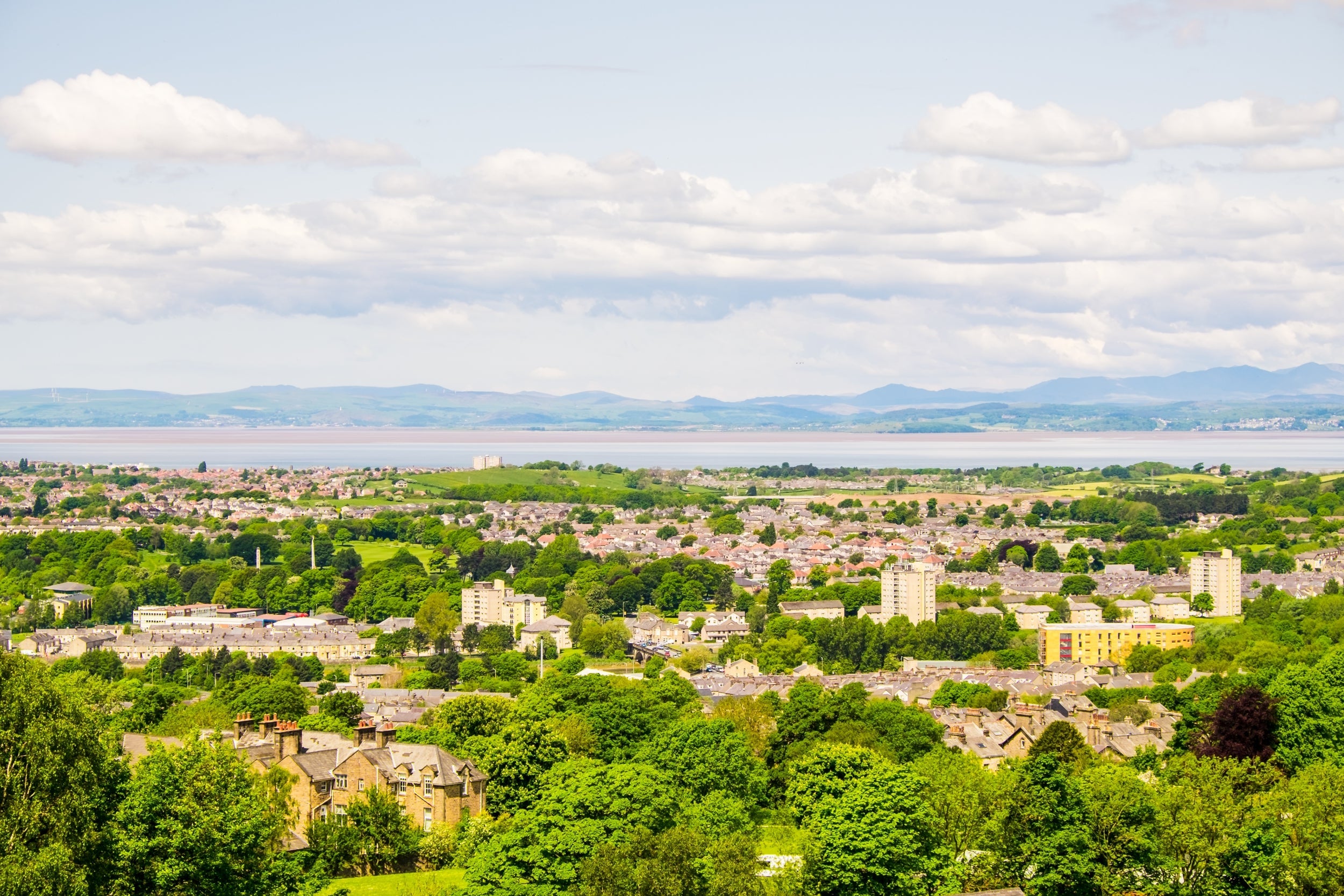How did my small hometown become the UK’s number one virus hotspot?
Uncrowded, leafy and surrounded by beautiful countryside, Barrow-in-Furness is far from an unsanitary township, writes Chris Blackhurst. So is poor health inequality to blame?


The first indication came in a WhatsApp message. “At least your hometown is now famous for something,” wrote a friend. He sent a link to the finding that yes, my birthplace, Barrow-in-Furness, has been named as the number one Covid-19 hotspot. A total of 552 cases of the virus have been reported in the small Cumbrian town. When extrapolated that equates to an infection level of 882.2 per 100,000 people – almost four times greater than the national average of 244.5.
It’s hard to take in. For those who’ve never been, Barrow is not akin to an unsanitary township, its inhabitants do not all live on top of each other in hellish conditions. The place is simply not like that. The town is industrial, built on the back of the shipyard, where today they build the Trident nuclear submarines, and long-gone steelworks, the result of mining iron ore nearby. It’s true, Barrow did develop in a rush in the Victorian era, and the streets in the centre are terraced and tightly packed, and there is still an area that was modelled on the tenement blocks of the Glasgow’s Gorbals.
But Barrow overall is uncrowded, nothing like an inner city, with wide main thoroughfares, leafy, and surrounded by beautiful countryside and wide, empty beaches. Its air too is clean and fresh, free of pollution compared with many places. In which case, why should it be so far ahead in this, the most unwanted of rankings? To give some context, as well as being far and away the highest in England, Barrow’s infection level is more than double that of Wales at 365, and far in excess of Scotland’s 251 and quadruple Northern Ireland’s 220.
Heart disease, asthma, obesity, diabetes and increased blood pressure are commonplace. Sadly, many locals would tick that now familiar box marked ‘underlying health conditions’
One obvious difference with Barrow is its isolation, stuck on the end of the Furness peninsula, the best part of an hour to the nearest M6 motorway or West Coast Main Line train service. That again cannot explain why its infection level should be so high. If anything, Barrow being sited on a limb ought to count in its favour. The town does not receive many visitors, not compared with say, the nearby Lake District; there is not much passing through traffic; and it’s hardly a magnet for travellers jetting in from China.
The locals are close, they often know each other and their frequently large families. They like to linger and chat. These may be factors, but then they’re not unique to Barrow either and yet it comes out much worse.
There must be a clue in that in second and third place are the neighbouring districts of Lancaster and South Lakeland. It’s can’t just be coincidence. While Barrow’s figure of 882.2 is far in excess of theirs, at 522 and 487.9 respectively, it’s worth speculating why these three should be ahead of anywhere else. I suspect the virus became embedded in Barrow, Lancaster and South Lakeland well before the lockdown. Schools from the region did go to Northern Italy skiing at February half-term. Some of those infected, we know, can be “super-spreaders”, passing on coronavirus without exhibiting any symptoms themselves.

It may have been the trio’s simple bad luck that having been caught abroad, the virus spread quickly around the district, possibly in clusters, in advance of the restrictions coming in. Certainly, there were two deaths that both made national headlines, one of a headteacher and the other of a hospital worker, relatively early on in the crisis. The virus may have got into care homes, of which there are many, prior to the barring of visitors and the arrival of PPE.
All three places happen to have substantial elderly populations. They’re around Morecambe Bay and are linked by only a few main roads. During the day, buses carrying the mostly older folk to the shops regularly travel between the towns and villages.
What also joins them – Barrow, Lancaster and South Lakeland – is that they share the same NHS hospital trust. They all come under the University Hospitals of Morecambe Bay NHS Foundation Trust, which covers three hospitals treating Covid-19 patients: Furness General in Barrow, Royal Lancaster Infirmary and Westmorland General in Kendal in South Lakeland. To its credit, the trust was especially quick off the mark and began testing healthcare staff and their families with symptoms at the end of February in advance of other trusts. The statistics may also reflect that early testing.
Barrow does suffer from poor health inequality and pockets of deprivation. A large proportion of people, too, are on disability benefits. There is an above average occurrence of industrial illnesses, especially those affecting the lungs – a legacy from when health and safety at work were not such concerns. Conditions such as heart disease, asthma, obesity, diabetes and increased blood pressure – all factors in increasing the risk of the onset of coronavirus – are commonplace. Sadly, many locals would tick that now familiar box marked “underlying health conditions”.
I can’t think what else is responsible for such a result. Doubtless in time experts will pore over the charts and settle on reasons why Barrow should score so badly. Let us hope they do: if nothing else, the good people of Barrow deserve an explanation.
Join our commenting forum
Join thought-provoking conversations, follow other Independent readers and see their replies
Comments